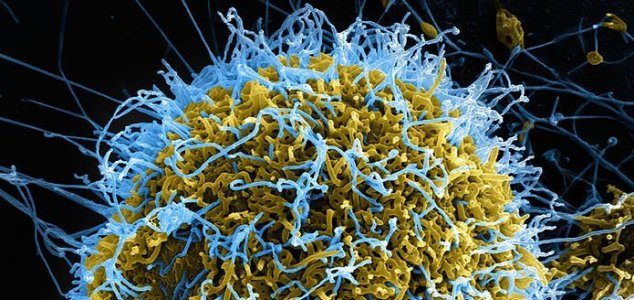A virus that is transmitted through the air and does not manifest itself in any way for years can “decimate” the planet’s population, so the carrier realizes that he is infected too late.
During the World Economic Forum in Davos, one of the main topics of discussion was a certain “disease X” that can kill millions of people. The World Health Organization has repeatedly warned about the risk of such a pathology, escalating the situation.
Note that the coronavirus pandemic alone has claimed almost 7 million lives in three years according to data from the Johns Hopkins Institute. The new “disease X” is expected to be 20 times more dangerous than the coronavirus. Although this is only a hypothesis and not a specific disease, scientists urge to prepare for its appearance.
This is precisely what the speech of WHO head Tedros Ghebreyesus was dedicated to, in particular. The statement of the head of the WHO, concerned about the emergence of “disease X” now, when the world has just begun to recover from the covid pandemic, seemed suspicious to many – is it not in the interests of pharmaceutical companies that the “chief doctor of the planet” is working? Nevertheless, Ghebreyesus demonstrated confidence that the “debut” of the superinfection would definitely take place.
We don’t ask the question: “What if it happens?” We ask the question: “When?”
– said Ghebreyesus.
Is it real?
Many pathogens have the potential to develop into the deadly “disease X”. These can be bacteria, fungi, and even some protozoa. However, viruses are the most dangerous from this point of view.
Humanity has learned to cope with bacteria with the help of antibiotics, and even if a drug-resistant bacteria arises, humanity has something to respond to. In some countries, in case of complete antibiotic resistance in the population, a “reserve” drug that has never previously been used against microorganisms has even been set aside. In addition, antibiotics can be combined during treatment for a more sustainable effect.
Things are even simpler with fungi – a strong immune system is able to suppress them on its own, so there is no need to talk about a total threat here. In general, in the history of mankind there have not yet been cases of fungi triggering a pandemic.
Will a new threat emerge from a test tube?
It is also important that viruses are much more promising for creation in laboratory conditions. A virus is the simplest system from the point of view of genetic engineering. In addition, they have been studied less than bacteria, so they are actively being investigated in China, the USA and many other countries of the world.
Scientists are interested, in particular, in whether various viruses can attack animal and human cells. Ironically, it is during experiments that “that” moment may arise that never occurs in the wild – when the virus meets human cells. However, this is not the worst thing.
The scientist will most likely receive a negative answer: this virus does not infect human cells. But then the talented head of the laboratory or the director of the institute will ask: “Or maybe we need to introduce some mutation in a certain gene?” And here is a very real scenario for the coronavirus pandemic, which WHO considers to be over.
There are several hundred laboratories within the walls of which a dangerous virus can be “grown” in developed countries of the Western and Eastern world. It is somewhat reassuring that such a super virus cannot be created in a garage – this requires equipment and the highest qualifications. In addition, protection will be required for the laboratory technician himself, and this is only possible in a well-equipped laboratory.
Worse than a nuclear war
There is an opinion that synthetic viruses will be used as biological weapons, but scientists believe that humanity will not get to that point as creating such a virus is possible, but too risky.
Most likely, no one will do this, because there are nuclear bombs – this is quite enough to destroy humanity. Why do we need to destroy humanity with viruses?
Describing an infection that can destroy all of humanity, it must be a respiratory virus, transmitted through the air, like the flu, and very slowly revealing its presence in the human body, like HIV infection.
A person has been infected for a long time, he transmits this pathogen to other people, but he does not feel sick. This asymptomatic period lasts quite a long time. And such a virus will kill, but with a delayed effect.
Ironically, after the head of WHO gave a lecture in Davos on the dangers of virus X, many laboratories will receive grants to study the potential causative agent of “disease X”. This is exactly how a future pandemic can be triggered.


















